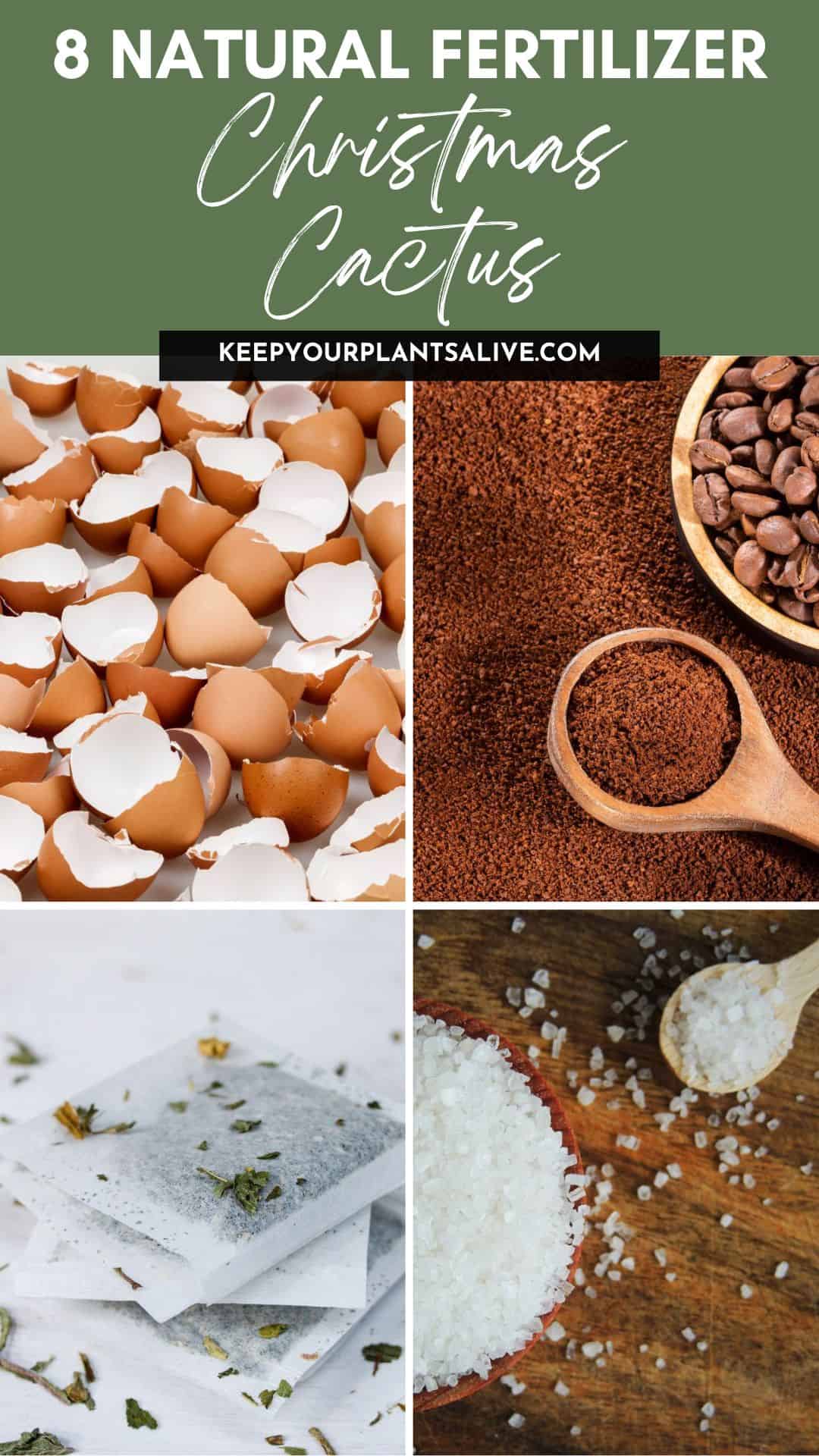Are the flowers falling off your Christmas cactus? Here's what to do after your Christmas cactus blooms!
The Christmas cactus, also known as Schlumbergera, is a unique plant that naturally grows in tropical forests in the southeast of Brazil.
It’s also a popular house plant typically kept indoors but can withstand outdoor conditions, as well.
Their overall structure consists of deep green stems that are flat and have serrated edges, which are beautiful and unique.
These plants are also known to bloom extraordinary flowers at the tips of their stems, often raging in various colors such as pink, red, purple, and white.
Once your Christmas cactus blooms, there are a couple of necessary steps for you to take in order to maintain it properly for it to deliver the next blooming season.
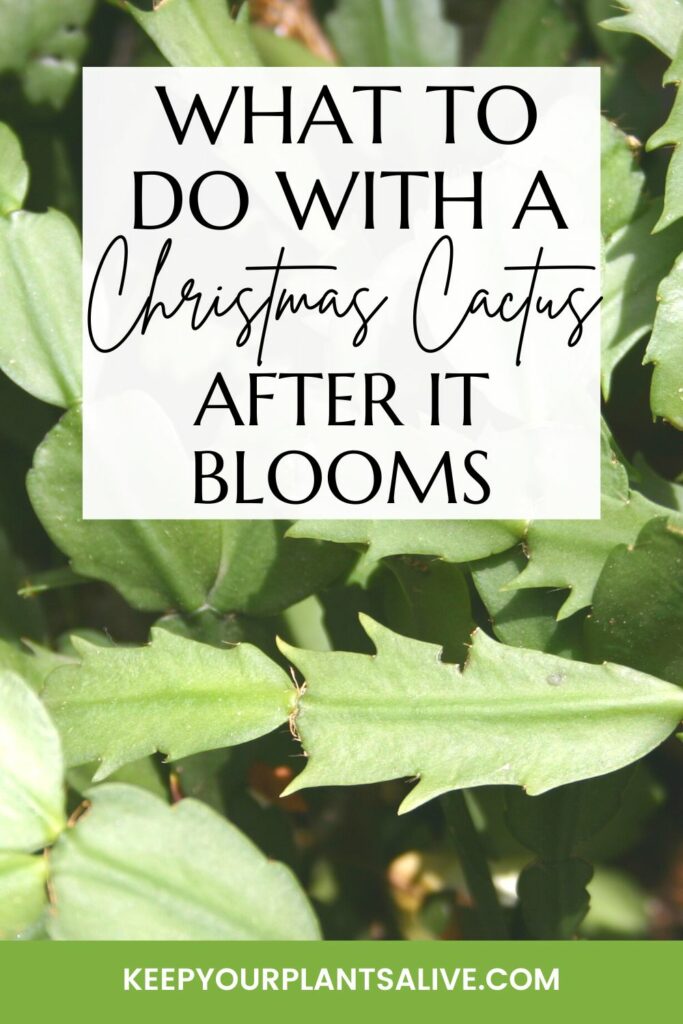
Free printable holiday cactus care guide
Join the (free!) KeepYourPlantsAlive+ community to access this exclusive printable plant care guide! Once you sign up, you can right click & save the JPG care guide. Or keep scrolling for more!

What to do after your Christmas cactus blooms
What you need to know once the blooming season is finished:
- How to do Christmas cactus pruning
- Watering amount
- Light exposure
- Environment setting
- Fertilizing routine
- Dormancy period
- Propagation method
Pruning maintenance
After your Christmas cactus blooms, you can prune it to encourage new growth and potential blooms for the next season.
If you were wondering how to prune your Christmas cactus, know it’s a very straightforward process.
Once the flowers begin to fade, you can prune them by gently pinching or twisting the end near the base and removing it.
This is "dead heading" which is the action of removing dead flower heads. However, remember to never prune your plant later than May.
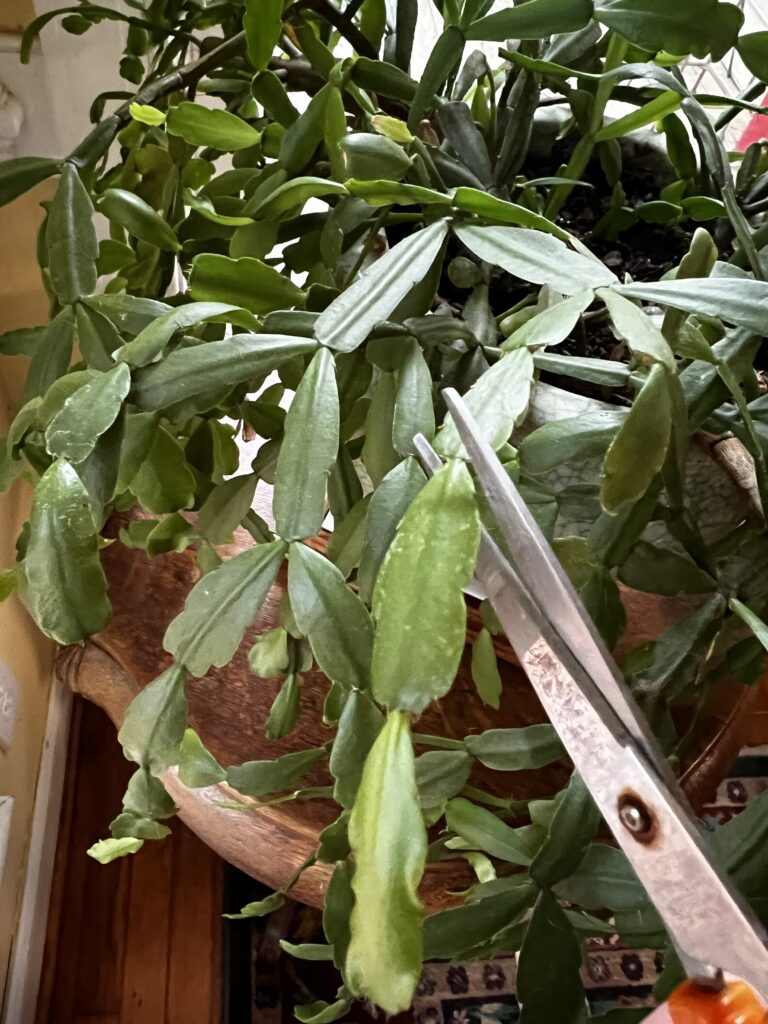
Watering amount
Another important segment of how to care for your Christmas cactus is establishing a watering schedule.
Just as with any other cactus, you need to be aware of the amount of water you put into it.
The most important step is placing your Christmas cactus in a pot with enough drainage holes.
You need to make room for any excess moisture to escape because otherwise, your plant will suffer from root rot and attract different pests and diseases.
On a normal schedule, you water the plant as soon as you notice the top layer feeling dry.
As soon as it begins blooming, you can slightly increase the amount of water to support the flowering process.
Once the blooming period is over, you can return to your regular watering schedule; only water it when the first inch of the soil feels dry. No more than that.
Light exposure
The amount of light the Christmas cactus receives is key to its production of flower buds.
It’s a plant that requires light and dark to thrive, so you need to fully understand every step of this Christmas cactus care guide.
Before blooming, it should be exposed to bright, indirect light. If it’s outdoors, place it in an area with shade but still bright.
These plants enjoy bright spaces but not extreme heat.
When it begins to bloom, you must adjust or decrease the amount of light it gets.
They prefer 13 hours of continuous darkness each day to encourage bud production.
So, after your Christmas cactus blooms start to wilt, return to your normal schedule and provide it with appropriate indirect light.
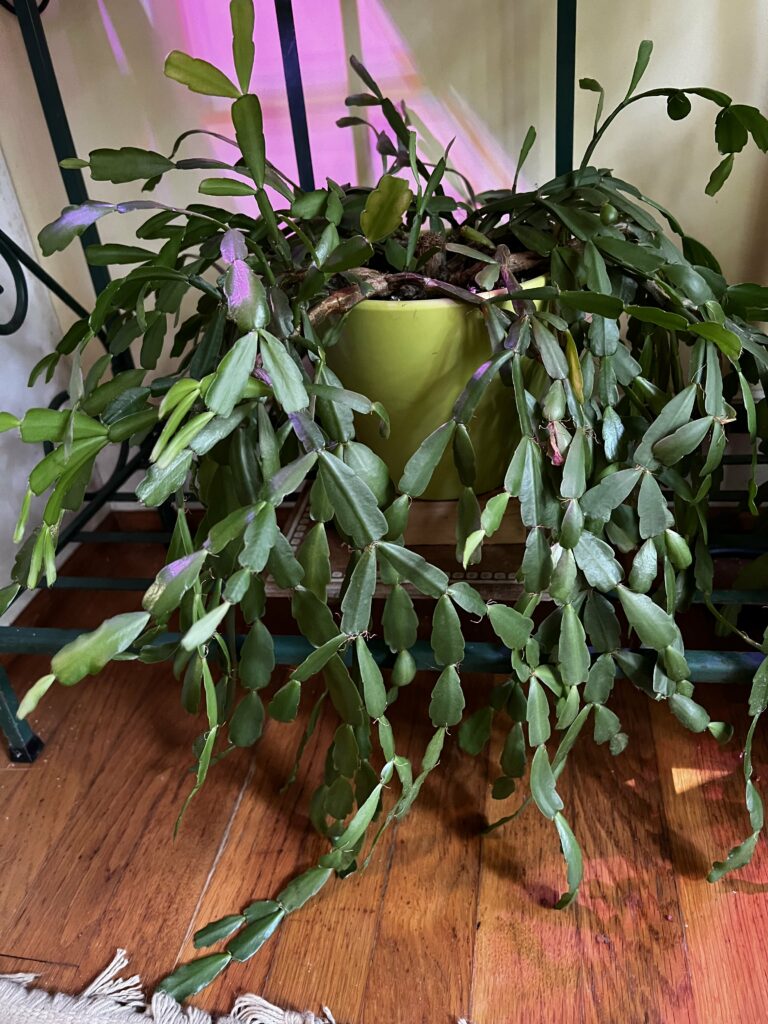
Environment setting
The Christmas cactus requires consistency in order for it to grow properly and promote health.
Moving the plant is not advised as it can stress it out and even cause its flower buds to fall.
Only move it when necessary, either if extreme weather changes occur or if you notice it's not properly growing.
An important tip to remember while you’re figuring out how to care for your Christmas cactus is that it reacts badly to drastic temperature changes.
Instead, keeping it in a consistent environment, away from drafts or intense heat, is the best solution. The ideal temperature is around 60°F to 70°F (15°C to 24°C).
In the next flowering season, you may notice a flower color change. This can sometimes happen depending on the temperature setting while the buds are forming.
For example, pink tones can occur if the temperature setting is lower. The color may also vary depending on the nutrients that the plant has received.
Although there’s no room for panicking, it’s always best to be consistent in your Christmas cactus care.
Fertilizing routine
Paying attention to the plant’s soil is key to maintaining its proper health. The Christmas cactus enjoys humus-rich soil with a gritty texture.
Therefore, make sure the soil isn't drenched in water or overly dry either.
The ideal time to feed your plant is around late winter or spring, once it’s finished blooming.
An important note to remember is never to feed your plant once October begins. Fall and winter is the time flower bud production begins.
Once your Christmas cactus blooms fall off, return to your regular routine.
You can add a half-strength fertilizer every two weeks in the spring and summer by applying it once a month. The 10-10-10 is a good option.
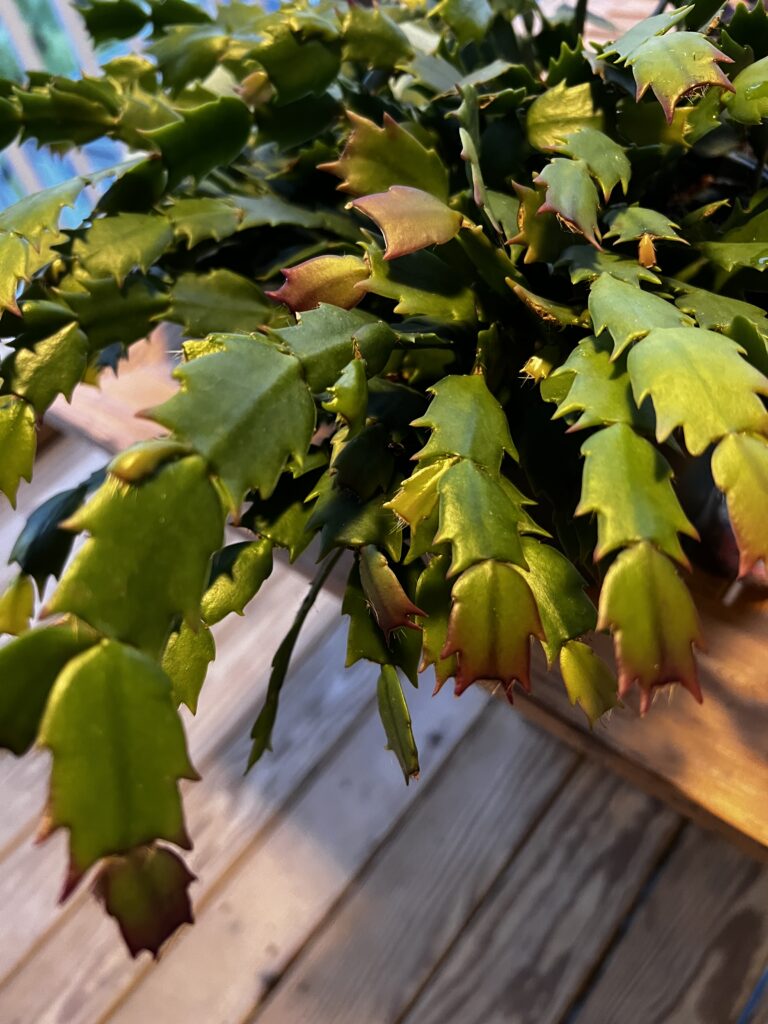
Dormancy period
The dormancy period is crucial in maintaining Christmas cacti as it sets them up for their next flowering season.
The best you can do is to try and replicate their native environment to promote proper growth.
Typically, they enter their dormancy period in the fall, during which time they should be in a cooler setting ranging from 60°F (10°C to 15°C) with a reduced watering schedule.
Be consistent with this routine, ideally for 6 to 8 weeks leading into the blooming season.
Propagation method
Propagating your Christmas cactus is quite easy, and it’s a great way to expand your collection, perhaps even share it with close friends.
To do so, you only need to cut a three-jointed piece of the stems, preferably a healthy segment, and wait for it to dry out slightly for one or two days before planting it.
Placing it in a pot with appropriate drainage holes and a suitable soil mix for its proper growth is extremely important.
Or, stick the cutting directly in water and plant in soil once the roots are 2 inches long.
You should notice the new stems growing in just a few weeks.
We hope this answers all your questions about caring for your Christmas cactus blooms!
Thanks for reading!


Hey there, I'm Morgan, a houseplant enthusiast from sunny Charleston, South Carolina. Growing up surrounded by my mom's lush orchids and African violets, I discovered the magic of bringing nature indoors. Thanks to the pandemic, I delved deeper into houseplants, discovering their power to uplift moods and transform spaces. I'm here to spill all my secrets, helping you pick the perfect houseplant - and make it happy. Let's keep your plants alive, together! 😊

